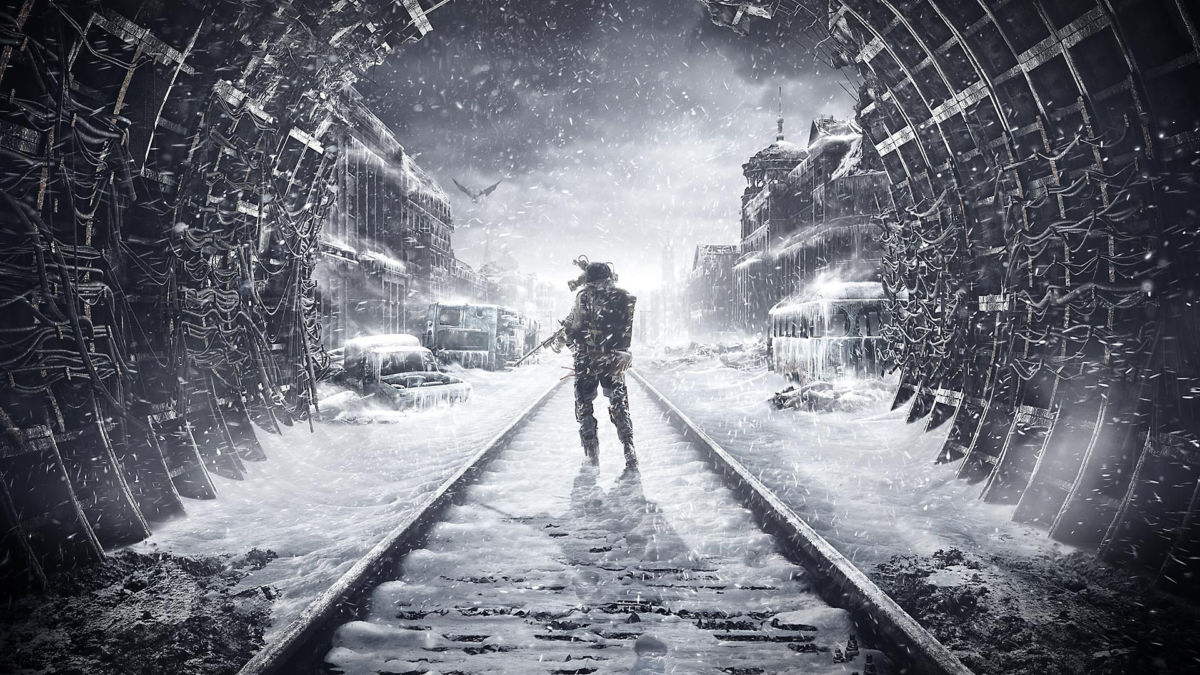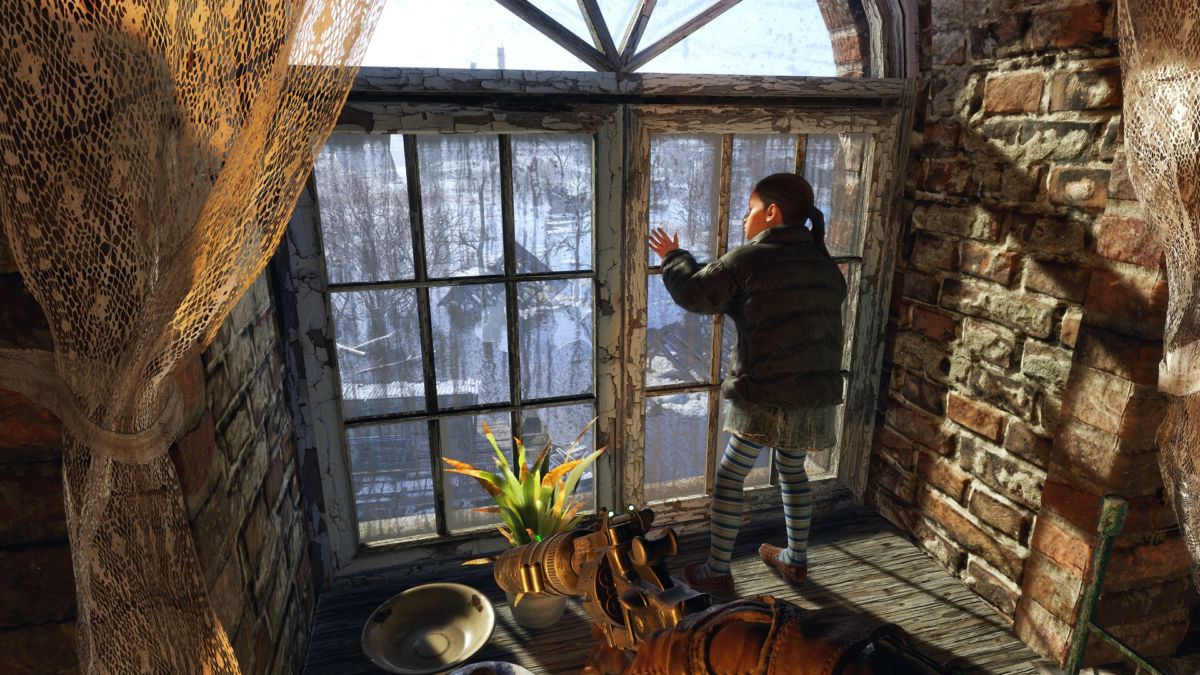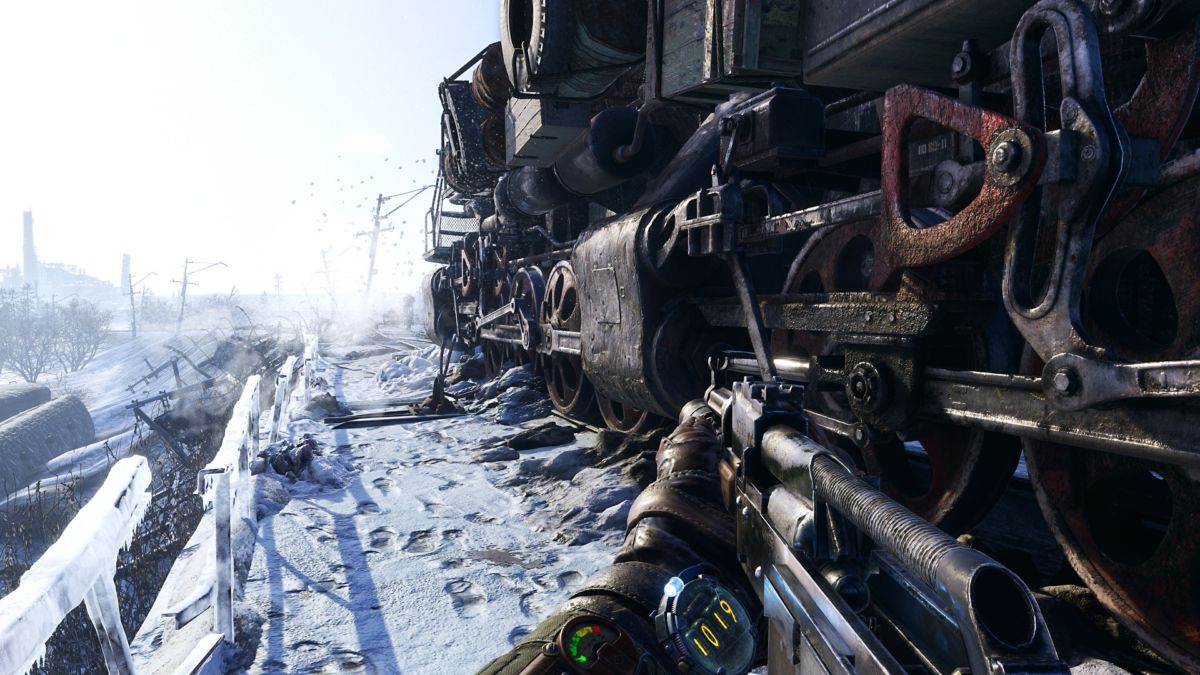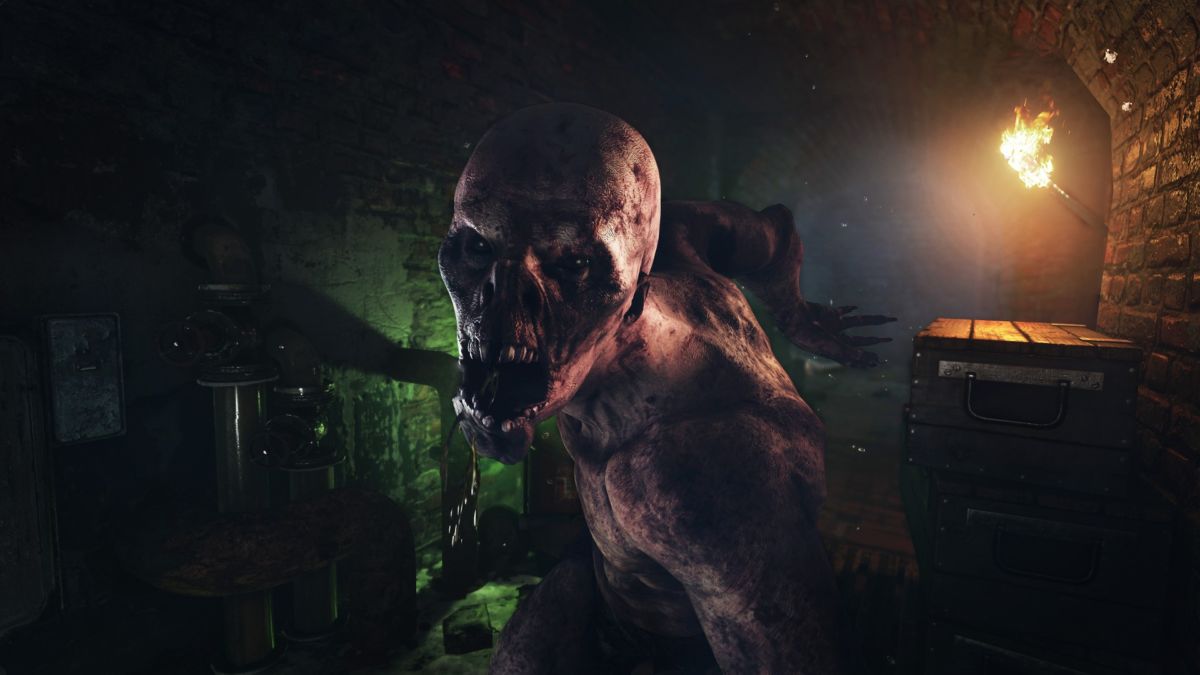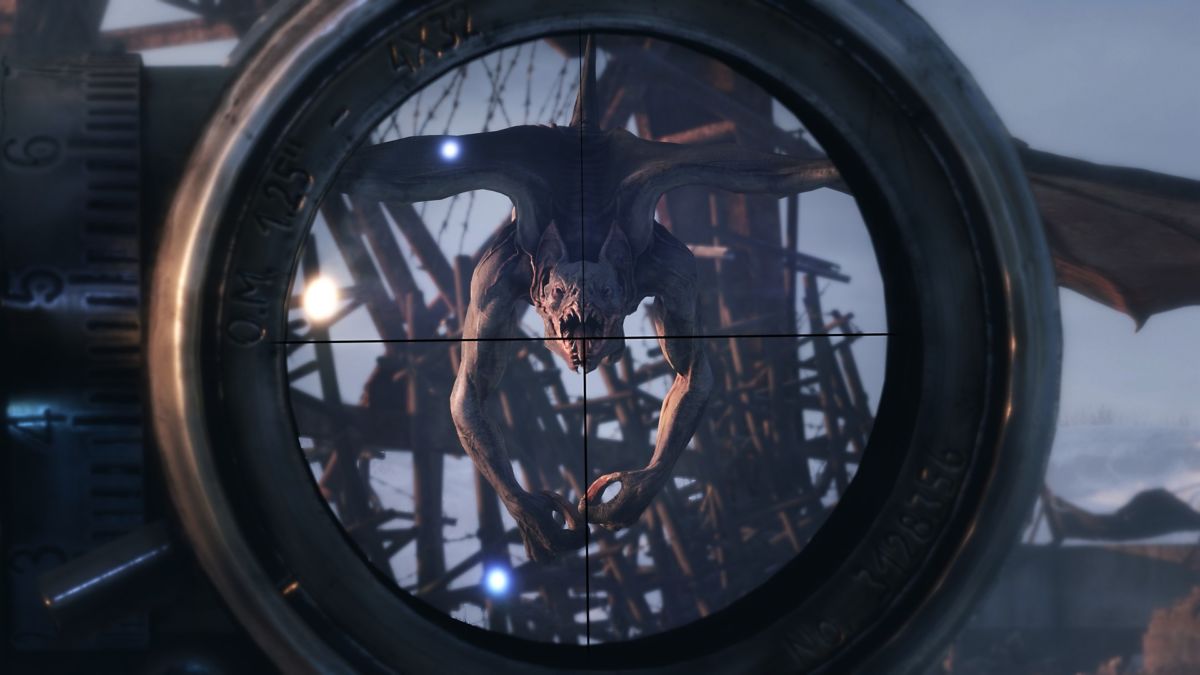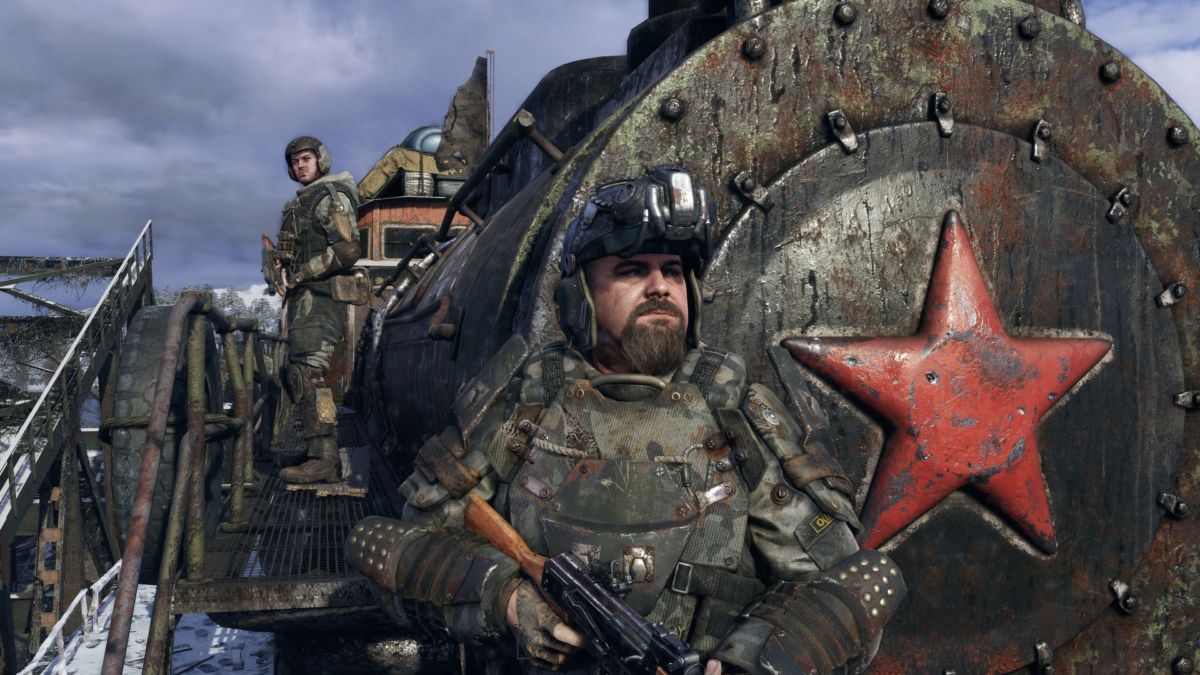
If Metro Exodus had to be described in one word, it would be “dense.” Compared to the previous entries in the post-apocalypse survival-FPS series, which were linear in nature and featured 12-15 hour campaigns on average, Metro Exodus contains at least twice that amount of content, and that’s if you’re doing barely more than the minimum required to continue. Featuring two open-world levels jam-packed with content, another semi-open but directed area and several more long but more traditional linear missions, Metro Exodus is bursting at the seams with stuff to see, do, shoot and listen to. This is not an entirely good thing, however.
Beginning with an introduction narrated by Artyom, the otherwise-silent protagonist, new and returning players alike are given a brief overview of the history of the world and situation in the Moscow Metro tunnels. In 2013, a global nuclear war devastated the planet, and around 50,000 survivors carved out a living in the sheltered Metro tunnels. Instead of banding together to survive as possibly the last people on Earth, Artyom laments that the Metro has fallen once more into the same infighting and problems that have always plagued mankind.
This is where the story begins in Exodus – Artyom is fed up with the miserable Metro life, and has left the Spartan Order, the small elite unit of soldiers dedicated to fighting enemies of the Metro at large, loyal to no faction except the innocent. Instead he journeys to the surface often, despite repeated exposure to dangerous levels of radiation, to search for radio signals from the outside world he is convinced still exists. He eventually gets his wish, but not in the way he had anticipated. Amidst a series of revelations and cascading events, Artyom finds himself traveling with a ragtag crew in search of a new home.
This crew includes Artyom’s wife Anna, herself an ex-Spartan sniper, her father and Spartan commander Colonel Miller, and an assortment of new characters including other Spartan soldiers, a train engineer, a mechanic and a nurse and her young daughter. They blaze through the post-nuclear Russian wilderness in a steam train called the Aurora, which serves as an expanding hub as more cars and functions are added to it throughout the story. Here players can clean and upgrade weapons, craft items and read through Artyom’s extensive diary chronicling the game’s events, character bios, weapons and enemies – plus play with the radio to find some tunes or listen to ancillary radio broadcasts.
Perhaps most importantly, the Aurora is where you interact with the game’s talkative cast of lovable cheesy characters. The archetypes are all here: the gentle giant, the young hothead, the ladies man, the outsider longing for true belonging, the gruff commander — you get the picture. The writing and (English) voice acting for these characters are both a mixed bag, with poignant and emotional moments offset by some questionable (or worse) deliveries or phrasing choices.
This is to say nothing of the sheer amount of dialogue there is: you can spend upwards of 30 minutes or more listening to everything everyone has to say or show you in each interlude chapter on the train, which doesn’t even touch on all of the dialogue in the open world levels. It was maddening when every time I’d walk away from a character because I thought they were done, they’d start up again just as I got to the door. I really wanted to hear everything they had to say, but there were times where I pressed on just to get on with it. Some of the monologues are absurd in how long they expect you to sit and just listen.
The kicker is, I did listen to most of it. For all of the cheesy moments and silly deliveries, there were too many genuine scenes and interactive pieces that hit the mark. Whether it’s smoke breaks with Krest the mechanic, jamming on the guitar with Stepan or getting young Nastya’s teddy bear back for her, there are tons of little character moments that fill in the blanks between all of the killing and desolation to create something worth fighting for. Metro Exodus’ ultimate theme is hope, and thanks to a strong introduction, a satisfying ending and plenty of great moments in between, the game manages to overcome its writing and voice acting fumbles. 4A Games were obviously wearing their hearts on their sleeves when they told this story, no doubt influenced by their real-life exodus from their native Ukraine amid civil war, and it’s impossible to stay annoyed at the crew of goofballs on the Aurora.
When you’re not chatting with the crew and chilling on the Aurora, Metro Exodus sends you into all kinds of stunningly rendered, intricately detailed and extremely hostile environments. The lighting in particular should be praised, especially the usage of ray tracing global illumination. The desert and forest environments in particular stand out, but even simple effects like the light scattering through a partially obscured train window or the dancing of shadows as a flashlight beam traces back and forth through an underground bunker lend the visuals an extra flair. If the game wants to be beautiful, it shines, but if it wants to be ugly, oppressive and creepy, it can do that just as well, if not better. The soundscape is just as praiseworthy, from the cracks and echoes of gunfire to the howls of mutants and storms alike and so much more. As an audiovisual package, Metro Exodus is top tier; without a doubt one of the best looking games ever made.
Each of the three open levels has a different overall goal and mini-storyline, as well as their own gameplay gimmicks and focuses. One level is water-focused and has boats as the primary transport method to get between major areas, while another in the desert features a van used to traverse the roads and shipwrecks of the dried-up sea. Mutants have some crossover appearances, like the new “humanimal” humanoid mutants that feature heavily in both of the open world chapters. Each location also features “bad guys” like slavers or bandits who can be killed at will, as well as more nuanced factions like an anti-technology cult or tribal slaves who the game encourages you to deal with more covertly and humanely in order to get the good ending.
The gameplay rhythm in these open world sections sees you traveling back and forth across the map to locations and objectives given to you by other characters (usually Colonel Miller), on foot or by vehicle as needed or desired. You’ll then usually return to the Aurora or meet up with an ally out in the field for a more structured story-driven mission. You’re almost never under any time constraint though, and are free to roam around in search of weapons and crafting resources, side missions or just something to shoot.
The shooting and everything surrounding it is where Metro Exodus makes the most significant improvements, which is marvelous because you’ll likely be doing a whole lot of it even if you like to be sneaky. Metro has always been a series that leans more towards immersion and simulation – Artyom and his enemies are on a roughly-level playing field when it comes to dealing and receiving damage, so a well-timed burst will drop you just as fast as an enemy on most difficulties. Health no longer recharges, so medkits become precious tools for survival rather than emergency resorts. The shooting feels as powerful as ever and movement retains the deliberate weight and slight clunkiness of the series, and the weapons, many of them improvised firearms built from scratch, have quirky animations that distinguish them from the usual FPS fare.
Exodus cranks this power and these animations up to 11, along with an intricate weapon modification system that you can access anytime through your backpack. If you picked up a weapon mod, it’s stored here, and you can turn a revolver into a scoped carbine, a single-shot shotgun-pistol into a four-barrelled monstrosity and so much more. It’s a joy to watch each weapon change shape dramatically and see how the animations change, almost as much fun as it is to actually fire the weapons. Shooting has been smoothed out just enough to give you a better chance at success in the game’s demanding combat encounters while retaining a sense of weight and vulnerability, though I did run into some hit detection issues at times.
Adding to this vulnerability is a new weapon condition system and the need to clear jams from your weapon as it gets dirty. This never crossed into annoyance territory, as the jams don’t happen until the gun is fairly visibly gummed up and the animations to clear them are quick and satisfying; racking the AK’s charging handle to clear a misfire as a mutant bears down on you is actually kind of exhilarating in a way that silly, overly long animations seen in other shooters fail to achieve. Cleaning weapons can be done using crafting resources at workbenches, which are also where more complex things you can’t make in your backpack, like bullets and grenades, can be crafted.
It’s a shame that the movement and controls related to non-violent tasks don’t see such improvement (besides an unreliable mantling function), and the game’s most frustrating moments often come from getting stuck on tiny pieces of geometry or invisible collision boxes. Additionally, even the tiniest bit of foliage or pile of twigs will cause Artyom’s movement to slow, presumably to simulate struggling through said foliage. It’s a bit excessive, however, and makes several areas of the game a chore to move through with any sense of urgency. Vehicle controls are also not too great, with the rowboats in particular straight up ignoring turn inputs at times. Metro’s slow, clunky movement was right at home in the confinements of the tunnels, but in an open world with more verticality and varied terrain, it could have used the same love and care that the gunplay received.
Stealth remains largely unchanged since Last Light: you have a light gem that indicates your visibility, you can crouch or walk slow to move quietly and areas frequently have multiple shortcuts and hidden paths to allow for circumvention of enemies rather than confrontation. If you need to engage, you can do silent takedowns, either lethal or non-lethal; the latter are the only no-kill method of dispatching an enemy. Throwing knives and suppressed or inherently silent weapons like the Tikhar airgun are also an option. Bodies cannot be moved though, a bizarre oversight that has persisted through all three games in the series, so make sure the guy you’re dropping won’t be found.
The stealth is serviceable, with fairly clear rules for what makes enemies suspicious versus outright detecting you. The one new addition is tin cans, which you can craft or find to throw as a distraction, and they do their job well enough. Still, with the game’s single slot quick save system and awkward checkpoints combined with areas where you are highly encouraged not to kill anyone, the sneaking can be frustrating if you’re spotted and your only recourse is a bad save only moments before.
The best advice for stealth is to take advantage of the new day/night cycle. By sleeping until dusk, you’ll trivialize most human encounters – but beware of increased mutant aggression. On the flip side, if the plan is to raid some abandoned buildings or mutant lairs, daytime is the time to shoot for. Sleeping can be done at one of several discoverable safehouses across each map, which also often contain workbenches.
While the two pillars of Metro’s gameplay are definitely combat and stealth, there is a third supporting pillar of sorts: the morality system. Like previous games, merciful or heroic acts such as sparing surrendering or unaware enemies, avoiding conflict and rescuing people in trouble will grant you hidden moral points, while senseless killing and general thuggery will hurt your moral standing. There is no meter or mechanic to track these things, they are instead woven into the fabric of the dialogue and story, with characters commenting on your actions and even leaving the crew or dying because of your actions in some cases.
This may sound problematic on paper, but in practice Metro Exodus does a superb job, better than either previous entry, at making sure you know where you stand, and at giving you opportunities to be a hero. It even seems to be balanced and understanding in its construction: there were a couple of points where I was backed into a corner and forced to kill people I didn’t want to in order to survive, but my overwhelmingly good deeds until then must have outweighed them as I still got the good ending. This adds to the game’s sense of realism and immersion – it knows you are guiding Artyom through an imperfect world, and seems to acknowledge that you’re doing your best. A ray of hope in a dismal world, much like this third game’s hopeful tone in contrast to the crushing oppression of the first two.
Much more could be said about the insane level of detail and care put into Metro Exodus from a technical and gameplay standpoint, but half of the fun of this lengthy, deep experience is finding all of this out for yourself. It has to be said that this game reminded me of two very similar ones that I count among my favorites: Far Cry 2 and S.T.A.L.K.E.R., the latter of which members of 4A’s staff previously worked on. It’s wonderful to see the open world survival shooter genre represented in such a stellar fashion here once again with Metro Exodus. If this is the final Metro game, they went out on the series’ highest note. If there’s more to come, the future is bright indeed.
Some of the coverage you find on Cultured Vultures contains affiliate links, which provide us with small commissions based on purchases made from visiting our site.
